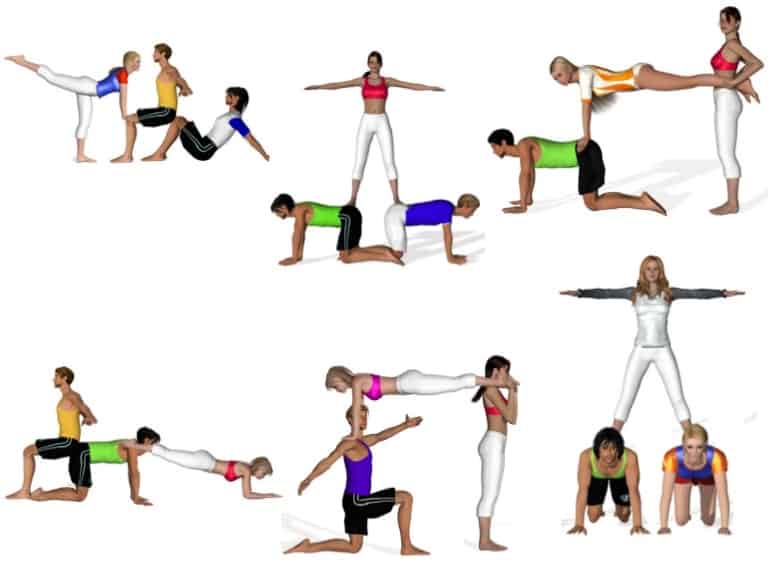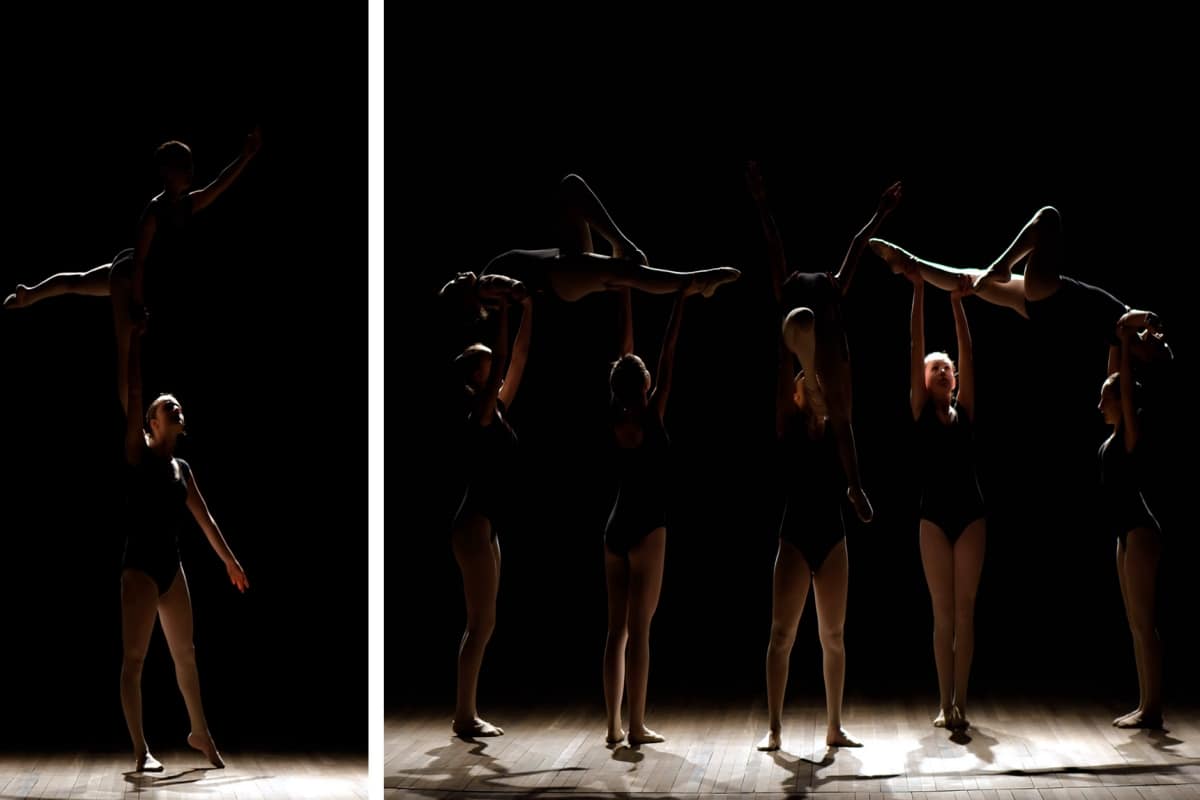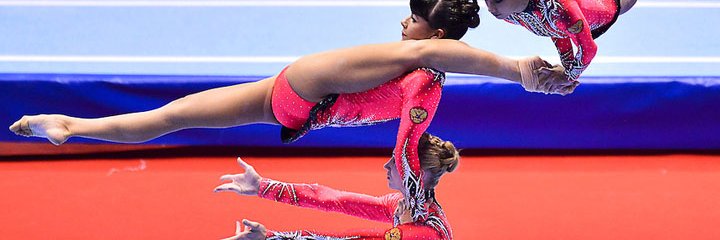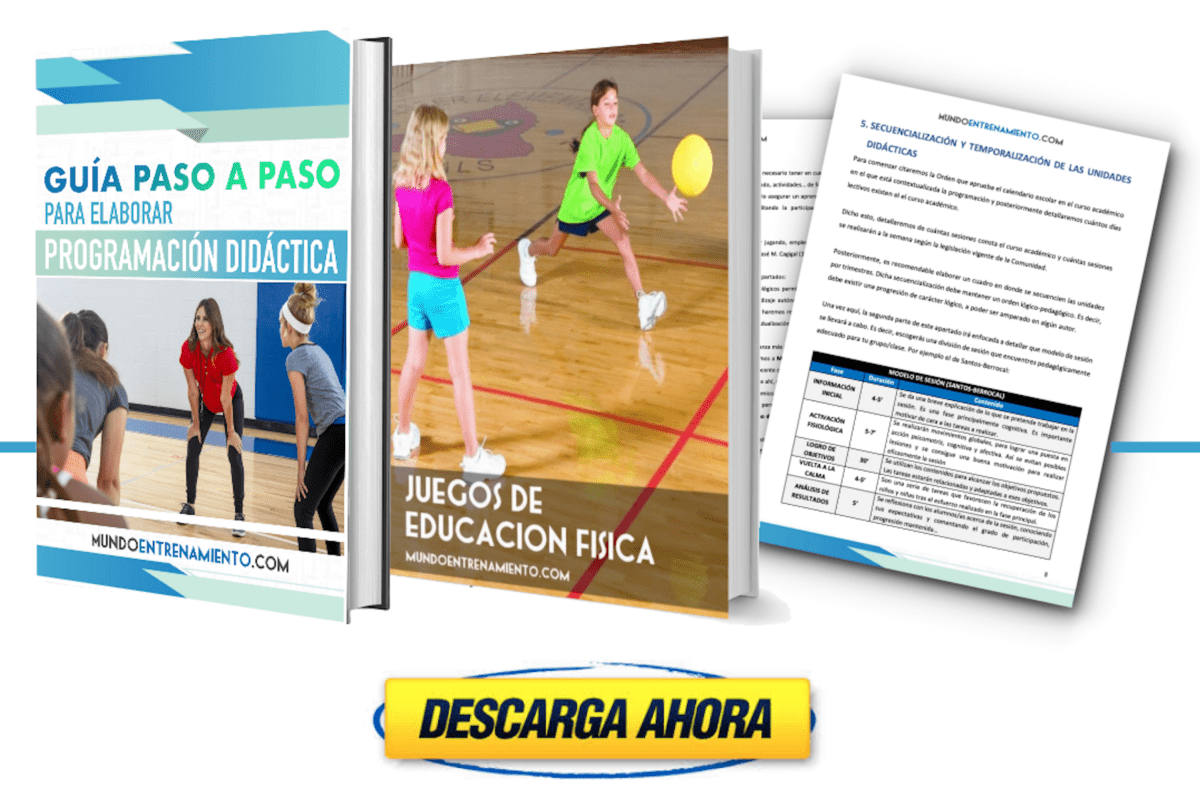The following article shows one of the existing possibilities in the area of physical education. Specifically, among the multitude of contents available, the treatment of acrosport in physical education.
What is acrosport?
Acrosport is considered an acrobatic sport performed by pairs, trios, quartets, or larger groups, through the combination of human pyramids, acrobatic jumps, and choreographic elements where the body performs several clearly defined functions, which are classified as: base and flyer.
Regarding the origin and evolution (1), it is observed that acrobatic exercises were already practiced in Egypt. Later, in Greece, they were also performed as a sport or popular spectacle, which has been known thanks to existing archaeological excavations.
During the Middle Ages and the Renaissance, interest in these types of disciplines increased, as well as their practice thanks to circus activities, and it was then that these activities began to be introduced into the educational framework.
From the 18th century, acrobatic activities began to be practiced in popular and festive events, and it was then that they were named and began to be called gymnastic activities, finally settling on the name acrosport.
Currently, acrosport is a sports discipline included in the International Federation of Acrobatic Sports, which has been part of the Gymnastics Federation since 1999.
Acrosport in physical education
The content of acrosport is an activity that, due to its characteristics, allows its use both in primary and secondary education (2). It is situated within the content related to body expression.
The treatment of acrosport in physical education allows students to express themselves creatively with their bodies and experience new sensations, work on their self-concept, and their relationship with classmates.
Within the sport, two figures stand out as we mentioned earlier, the base, who is the person who supports, and the flyer, who performs the elements on the base or is launched by the bases.
The latter is usually characterized by being smaller and lighter, while the bases are usually larger and stronger, a condition that allows them to support the weight.
To assign the different figures to the students, besides the physical part, it is necessary to know their skill and agility, as this will condition the possible performance of the sport.
The exercises are performed in pairs, trios, or quartets, making changes of figures and acrobatic gymnastic evolutions (for example: cartwheels, inversions, fifths, round-offs, etc.), dance steps can also be introduced.
One of the remarkable aspects of this sport is the acrobatic possibilities, as well as its characteristics (3):
- Creativity: The acrobatics allow a multitude of possibilities and encourage students to imagine and create different forms.
- Cooperation: due to the simple composition of the figures and the need for help to perform them.
- Self-improvement
- Self-esteem: individual and group responsibility increases confidence, which ultimately leads to an increase in students’ self-esteem.
- Expressiveness
- Motor skills: Movement and motor skills are associated since every movement is accompanied by the motor part.
- Sociability: thanks to the continuous interaction with the partner or classmates, a bond arises that leads to cooperation with others and social relationships that can go beyond the activity itself.
Characteristics of acrosport
We already know the two main figures that make up acrosport in physical education, therefore, below are other characteristics of the modality to be addressed:
- Types of grips: these can be of different types depending on the grip and the place where it is held:
- hand:
- both partners hold hands
- hand to wrist
- hand to humerus
- arm-arm: held by the elbow, shoulder, mid-forearm…
- hand-foot: it can also be hand-ankle or even foot-foot although the difficulty increases considerably.
- hand:
- Types of supports: they can be static or dynamic, while there are several options depending on which part of the body the support is made (on the legs, on the back, on the shoulders…)
- Positions: regarding these, we must distinguish between the positions of the flyer which can be aerial, on the ground, only on the base…in short, very varied. And the positions of the base, which is usually placed in quadruped or standing position.
- Assistance: there are material, manual, and preventive aids (4):
- materials: use of material that is used complementarily such as mats or crash pads to increase the safety of sports practice.
- manuals: among students, or from the teacher, to improve execution or reduce the risk or fear of students.
- preventive: these are the procedures to be followed by both figures of acrosport to avoid falls and injuries during the activity.
Regarding this last point of assistance, highlight the concept of safety. Safety measures (5) are the interventions to be carried out or actions to be avoided when putting an action into practice to minimize risk and with it the possibilities of damage occurring.
Descubre la importancia de trabajar con deportes alternativos en Educación Física.
Veremos paso a paso, el auge en la última década de este tipo de deportes en el ámbito de la educación física, además se van a presentar dos propuestas prácticas para su desarrollo.
What does acrosport bring to physical education?
There are many aspects that make one think that acrosport in physical education can be complex to include. However, it is an ideal discipline to address in the list of contents to work on due to its educational values, among others, we find the following (6):
- Increases students’ autonomy and motivation.
- Broad active participation of all group members, as everyone is essential to achieve the goal.
- Experimentation of sensations of one’s own body and increased expression of it.
- Role execution.
- Cooperative work and individual and group responsibility
- Elimination of behaviors that favor discrimination and non-cooperation and integration.
Practical proposal of acrosport in physical education
Acrosport can be worked on in physical education without any problem, as a didactic unit within the last courses of primary, or compulsory secondary education.
This content, as mentioned at the beginning, is worked on as part of the content of body expression.
For example, an eight-session unit could be proposed:
- The first to conduct an initial assessment, present the unit, and outline the objectives and methodology:
|
Section |
Description |
Time |
|---|---|---|
| What is acrosport? | Acrosport is a sport that combines acrobatics and choreography. It is a sports modality included in the International Federation of Acrobatic Sports and part of the International Gymnastics Federation since 1999. | 10′ |
| Fundamentals | 1. Formation of body figures or pyramids. 2. Acrobatics and elements of strength, flexibility, and balances with transitions. 3. Dance elements, jumps, and gymnastic spins. |
|
| Where is it practiced? | On a 12×12 meter mat (similar to rhythmic or artistic gymnastics). | |
| Characteristics of the competition exercise | Includes acrobatic, gymnastic elements of flexibility, balance, jumps, spins, and cooperative movements among group members. There must be harmony and coordination in the actions. Difficulty, technique, and artistic dimension are valued. | |
| Duration of the exercise | Varies according to the category, but a reference of 2 minutes and a half (2’30”) with a margin of plus or minus 5 seconds is taken. | |
| Categories | – Pairs: mixed, female, and male. – Female trios. – Male quartets. – Mixed groups (3-6 members). |
Theoretical-practical part
|
Section |
Description |
Time |
|---|---|---|
| Roles | Base, flyer, observer, and assistant. | 20′ |
| Grips and holds | – Hand to hand – Clamp – Hand wrist – Hand foot |
Final part
|
Section |
Description |
|---|---|
| Material delivery | The material worked on is delivered to the students for their review and reflection on the content covered. |
- The next three to work on strength and balance and work in small groups to practice the different roles, as well as the grips between them.
- Fourth and fifth session: creation of work groups, to with the roles and grips established in the previous sessions, begin to practice figures and distributions as well as gymnastic elements.
- Sixth and seventh: creation and rehearsals of the final choreography, with the aim of including everything learned and worked on previously. Example of a session:
Session on acrosport
|
Part |
Description |
|---|---|
| Warm-up | General warm-up: joint mobility; shoulders, elbows, wrists, neck, waist, hips, knees, and ankles.
Specific warm-up: we try to maintain positions, arms in a cross for 15 seconds, in a quadruped position, lifting one leg, etc. Stretching: Cervicals, trapezius, dorsal (holding onto wall bars), forearms, wrists, deltoids, triceps, and biceps, quadriceps, also the posterior part of the body, hamstrings, calves, adductors… We will try to be silent during the stretches, concentrating on the part we are stretching and always saying the name of the muscle out loud and clear so that they memorize the major muscle groups. |
| Main part | Students will be given acrosport figure sheets and they will autonomously perform the figures little by little. Then they will execute the figures they have thought of and observed on the Internet at home, at least two figures per student. Try some new position, easy figures… (Invented by the students). |
| Cool down | Reflections and stretching of the muscle groups involved. |
- Eighth session: Rehearsals of the designed choreography and staging of it by groups.

How is acrosport evaluated in physical education?
The evaluation of acrosport in physical education is usually based on several aspects. First, the technical execution of the figures is assessed. This includes how students maintain balance, the way they collaborate, and if they manage to perform transitions smoothly.
In addition, teamwork is evaluated. Since acrosport is an activity where cooperation is essential, teachers observe how students communicate, how they solve problems, and how they support their peers during the activity. Creativity is also taken into account when creating new figures or sequences, which adds value to the evaluation.
What categories exist in acrosport?
In acrosport, the categories vary according to the number of participants and the type of formation. The main categories include pairs, trios, quartets, and mixed groups of between 3 and 6 people. Each category has its own level of complexity, allowing both beginners and more advanced students to enjoy the activity.
Figures in pairs tend to be simpler, with a base and a flyer, while figures in larger groups can include human pyramids and more dynamic transitions. This category system ensures that acrosport is accessible to everyone, regardless of their level of experience.
In conclusion, acrosport in physical education is not only an exciting and challenging physical activity but also a tool for the personal and social development of students.
Conclusions
The content of acrosport in physical education is completely valid and novel for students in the final courses of primary education and secondary education.
It works cooperatively and increases students’ responsibility and confidence, also improving their autonomy as well as confidence due to the continuous work with classmates and during the development of the choreography and exposure to other groups.
Below you can download two free ebooks on physical education
Bibliographic references
- López, R. (2010). Acrosport: a cooperative proposal for development. EmásF: digital magazine of physical education, (4), 37-52.
- Cabo, A. (2011). Acrosport and its educational and integrative value in physical education classes. Digital magazine, Topics for Education, 16, 1-12. Retrieved from: https://www.feandalucia.ccoo.es/andalucia/docu/p5sd8649.pdf
- Manzaneda, A. (2008). Acrosport and its practical application as educational content. History, 1, 1.
- León Prados, J. A. (2004). Safety and hygiene in the healthy practice of acrosport.
- Barâo, A., & Lagoas, J. (1983). Manual help. Ludens, 7 (3), 38-40.
- Torres Jiménez, R. (2014). Implementation of acrosport in the physical education classroom. Safety conditions in acrobatic activities.
- Pérez, S. and Rodrígez, M. (2014). Didactic unit in secondary education: Acrosport ‘Give me a hand’. EFdeportes.com. Digital Magazine. 19 (196).




